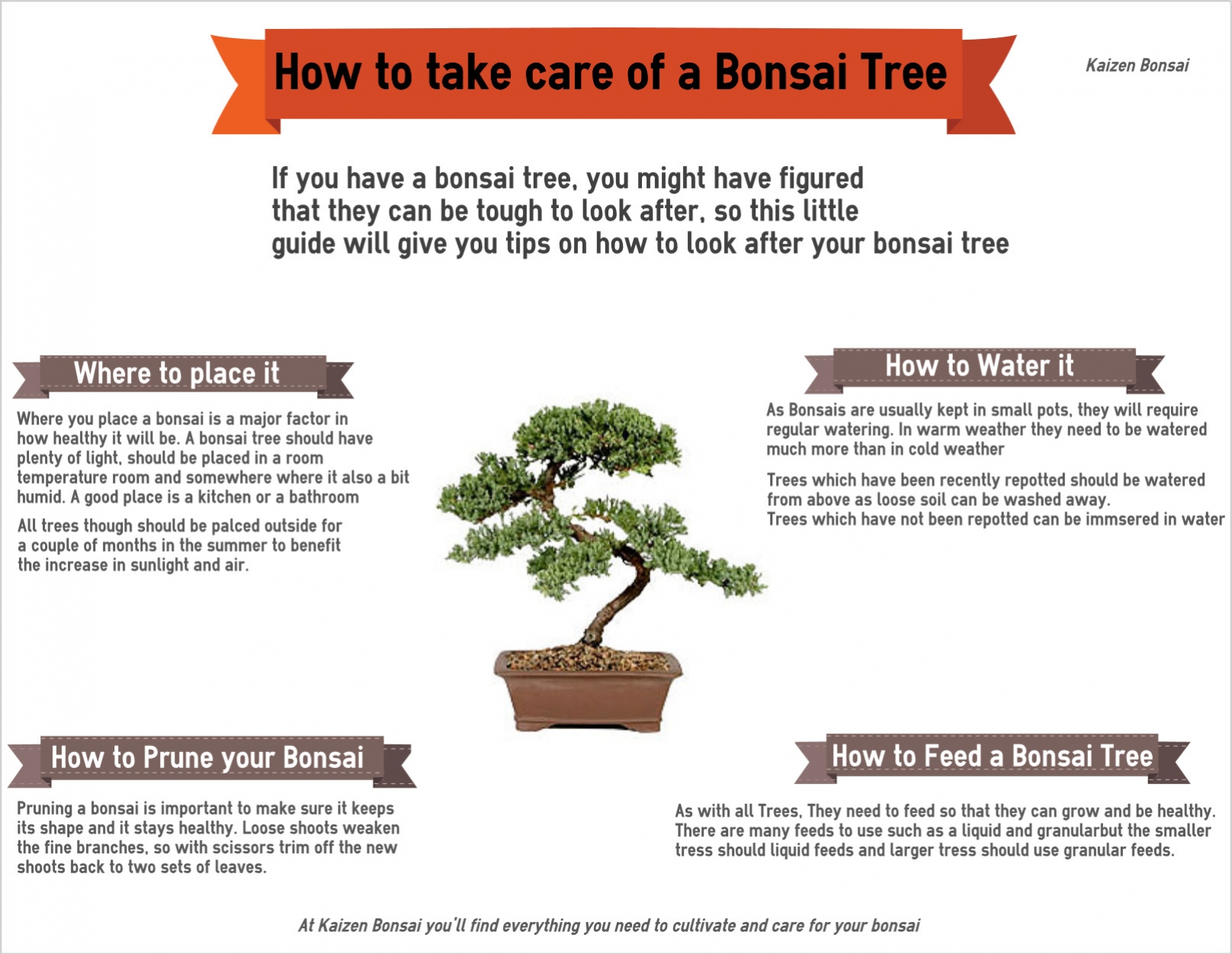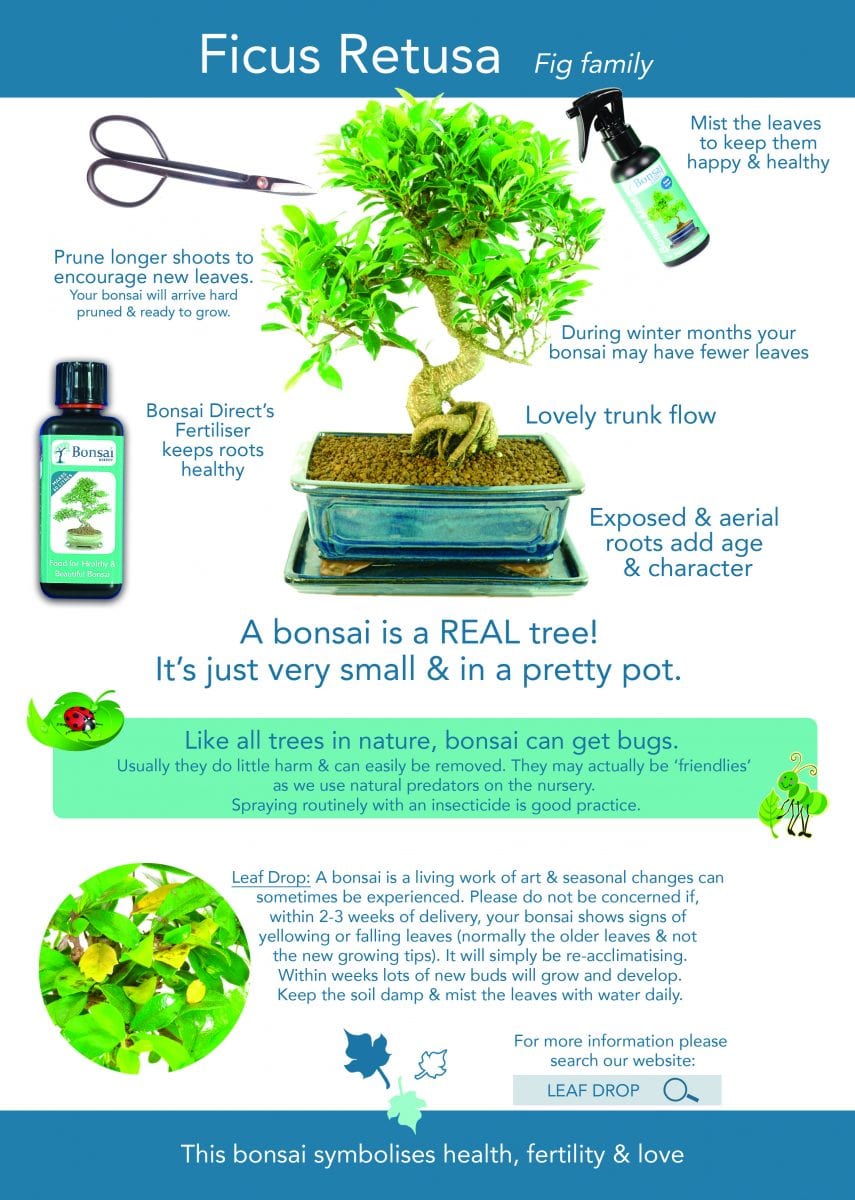Water your bonsai regularly and ensure it gets enough sunlight. Prune and repot it to maintain its health.
Bonsai trees require careful attention and consistent care to thrive. Regular watering is crucial; the soil should be moist but not waterlogged. Adequate sunlight is essential, so place your bonsai in a well-lit area. Pruning helps maintain the tree’s shape and promotes healthy growth.
Repotting every couple of years ensures the roots have space to grow and the soil remains nutrient-rich. Using the right soil mix and fertilizers can also make a significant difference. By following these practices, you can enjoy a healthy and beautiful bonsai tree. Proper care not only maintains its beauty but also extends its lifespan.
:max_bytes(150000):strip_icc()/types-bonsai-trees-for-beginners-ficus-bonsai-getty-0723-116ac2c1a949489d92e82a18173a6834.jpg)
Credit: www.marthastewart.com
Choosing The Right Bonsai Tree
Choosing the right bonsai tree is crucial for your success. The right tree matches your environment and skill level. Understanding different types of bonsai trees helps you make an informed decision. Considering factors like climate, maintenance, and personal preference ensures you pick the perfect bonsai tree.
Types Of Bonsai Trees
Bonsai trees come in various types, each with unique characteristics. Here’s a brief overview:
- Juniper Bonsai: Hardy and easy to train, ideal for beginners.
- Ficus Bonsai: Adaptable and easy to care for, popular among indoor growers.
- Maple Bonsai: Beautiful foliage, requires more attention, suited for experienced growers.
- Pine Bonsai: Iconic and long-living, needs careful maintenance.
- Azalea Bonsai: Bright flowers, needs specific soil and care.
Factors To Consider
When choosing a bonsai tree, consider the following factors:
| Factor | Details |
|---|---|
| Climate | Some bonsai trees thrive in specific climates. Make sure your local climate supports the tree you choose. |
| Space | Bonsai trees can be grown indoors or outdoors. Ensure you have adequate space for the tree’s growth. |
| Maintenance | Consider the time and effort required for pruning, watering, and repotting. Choose a tree that fits your schedule. |
| Personal Preference | Select a tree that you find aesthetically pleasing. This will keep you motivated to care for it. |
By understanding different types of bonsai trees and considering these factors, you can choose the perfect bonsai tree for your needs.
Ideal Placement
Finding the ideal placement for your bonsai tree is crucial. It ensures the tree’s health and longevity. Bonsai trees thrive in specific environments. Let’s explore the best locations to place your bonsai tree.
Indoor Vs Outdoor
First, decide if your bonsai tree will be indoor or outdoor. Each type has unique needs.
| Indoor Bonsai | Outdoor Bonsai |
|---|---|
| Protected from extreme weather | Needs natural light |
| Consistent temperature | Experiences seasonal changes |
| Common species: Ficus, Jade | Common species: Juniper, Pine |
Light Requirements
Light is essential for your bonsai tree. Both indoor and outdoor trees have specific light requirements.
- Indoor Bonsai:
- Needs bright, indirect sunlight
- Place near a south-facing window
- Avoid direct afternoon sun
- Outdoor Bonsai:
- Requires full sunlight for at least 6 hours
- Best placed in an open area
- Ensure good air circulation
Understanding these light needs helps in choosing the best spot for your bonsai.
Watering Techniques
Watering is crucial for the health and beauty of your bonsai tree. Proper techniques ensure that your bonsai thrives and grows beautifully. Let’s explore the best ways to water your bonsai tree effectively.
Frequency Of Watering
The frequency of watering depends on various factors. These include the species of the bonsai, the size of the pot, and the climate.
- Check the soil daily to ensure it’s not too dry or too wet.
- Insert a finger into the soil to test moisture.
- Water the bonsai when the soil feels slightly dry.
Adjust the frequency based on seasonal changes. In summer, you may need to water more often. In winter, reduce the watering frequency.
Water Quality
Using the right water quality is essential for bonsai health. Tap water can be used, but consider the following:
| Water Type | Considerations |
|---|---|
| Tap Water | Let it sit for 24 hours to reduce chlorine. |
| Rainwater | Ideal for bonsai, as it’s free from chemicals. |
| Filtered Water | Removes impurities and is safe for bonsai. |
Ensure the water is at room temperature. Avoid using very cold or hot water.
# Example of a simple watering routine:
1. Check the soil moisture.
2. Use room temperature water.
3. Water until it drains from the bottom.
Following these techniques will help your bonsai tree flourish.

Credit: visual.ly
Pruning And Shaping
Pruning and shaping are crucial for bonsai tree care. These techniques maintain the tree’s beauty and health. They also help control the tree’s size and shape. Proper pruning and shaping create stunning bonsai displays.
Tools Needed
Using the right tools ensures precise and clean cuts. Here are essential tools:
- Pruning Shears: For cutting small branches.
- Concave Cutters: For removing thicker branches.
- Branch Benders: To shape and bend branches.
- Wire Cutters: For trimming bonsai wire.
- Raffia: Protects branches during bending.
Best Practices
Follow these best practices for effective pruning and shaping:
- Identify Branches: Choose which branches to cut or shape.
- Cut at Angles: Make cuts at 45-degree angles for better healing.
- Avoid Over-Pruning: Do not remove too many branches at once.
- Use Bonsai Wire: Wrap branches with wire to shape them.
- Check Growth: Regularly inspect for new growth and adjust shaping.
Pruning and shaping are art forms. Patience and practice lead to beautiful bonsai trees. Remember to use the right tools and follow best practices. Your bonsai tree will thrive and look stunning.
Soil And Repotting
Bonsai trees need special care to thrive. Two key aspects are soil and repotting. Proper soil ensures healthy roots. Repotting helps the tree grow well. Let’s dive into these essentials.
Choosing The Right Soil
The right soil mix is crucial for your bonsai tree. Bonsai soil must drain well but also retain moisture. A mix of Akadama, pumice, and lava rock is ideal. This ensures good aeration and water retention.
| Soil Component | Purpose |
|---|---|
| Akadama | Retains moisture and nutrients |
| Pumice | Enhances drainage and aeration |
| Lava Rock | Prevents soil compaction |
Avoid regular garden soil. It compacts and suffocates bonsai roots. Use a specialized bonsai soil mix for best results.
When And How To Repot
Repotting is essential for healthy bonsai trees. It prevents root-bound conditions and refreshes the soil.
- Frequency: Young trees need repotting every 1-2 years. Older trees can wait 3-5 years.
- Season: Early spring is the best time to repot. The tree is dormant and less stressed.
Follow these steps to repot your bonsai:
- Remove the tree from its pot. Gently loosen the roots.
- Trim the roots by one-third. Use clean, sharp scissors.
- Prepare a new pot with a layer of fresh soil.
- Place the tree in the new pot. Spread the roots evenly.
- Fill the pot with soil mix. Press gently to remove air pockets.
- Water the tree thoroughly. Ensure water drains well.
Repotting refreshes the tree’s environment. It also encourages new root growth.

Credit: www.bonsaidirect.co.uk
Fertilizing Your Bonsai
Caring for your bonsai tree involves more than just watering and pruning. Fertilizing your bonsai is crucial for its health and growth. Fertilizers provide essential nutrients that the soil may lack. This section covers the best ways to fertilize your bonsai.
Types Of Fertilizers
There are different types of fertilizers you can use for your bonsai:
- Organic Fertilizers: Made from natural ingredients like bone meal or fish emulsion.
- Chemical Fertilizers: Manufactured and contain synthetic nutrients.
- Liquid Fertilizers: Quick-acting and easy to apply with water.
- Slow-Release Fertilizers: Release nutrients over time, reducing the need for frequent application.
Choosing the right type of fertilizer depends on your bonsai’s needs and your preference.
Application Methods
Applying fertilizer correctly ensures your bonsai gets the nutrients it needs:
- Liquid Fertilizer:
- Mix the fertilizer with water as per instructions.
- Water the bonsai soil thoroughly.
- Apply the liquid fertilizer evenly.
- Slow-Release Fertilizer:
- Sprinkle the granules evenly on the soil surface.
- Water the soil to help the granules dissolve.
- Organic Fertilizer:
- Mix the organic fertilizer into the top layer of soil.
- Water the bonsai to help nutrients reach the roots.
Always follow the instructions on the fertilizer package for the best results. Too much fertilizer can harm your bonsai.
| Type of Fertilizer | Application Frequency |
|---|---|
| Liquid Fertilizer | Every 2-4 weeks |
| Slow-Release Fertilizer | Every 2-3 months |
| Organic Fertilizer | Every 4-6 weeks |
Using the right fertilizer and applying it correctly will keep your bonsai healthy and beautiful.
Pest And Disease Management
Maintaining a healthy bonsai tree requires diligent pest and disease management. Pests and diseases can quickly damage your bonsai. Effective strategies keep your tree thriving.
Common Pests
Bonsai trees are vulnerable to a variety of pests. Here are some common ones:
- Aphids: Small, sap-sucking insects that can weaken your tree.
- Spider Mites: Tiny pests that cause yellowing and leaf drop.
- Scale Insects: Hard-shelled insects that suck sap and produce honeydew.
- Whiteflies: Small, white insects that fly when disturbed.
- Mealybugs: Cotton-like insects that cluster on leaves and stems.
Preventative Measures
Preventing pests is easier than treating an infestation. Implement these preventative measures:
- Regular Inspections: Check your bonsai tree weekly for signs of pests.
- Proper Watering: Avoid overwatering as it can attract pests.
- Clean Environment: Keep the bonsai area clean and free of debris.
- Healthy Soil: Use well-draining soil to prevent diseases.
- Natural Predators: Introduce beneficial insects like ladybugs.
Regularly monitor your bonsai for early signs of trouble. Quick action prevents major issues. Use these tips to keep your bonsai healthy and pest-free.
Seasonal Care Tips
Caring for your bonsai tree involves understanding its needs in different seasons. Each season requires specific attention to ensure your bonsai thrives. This guide provides essential care tips for winter and summer.
Winter Care
Winter can be tough for bonsai trees. Here are some tips to help your tree survive the cold months.
- Protect from frost: Move your bonsai indoors or use a frost cloth.
- Reduce watering: Water less frequently, but ensure the soil is not dry.
- Light: Place near a window to get maximum sunlight.
- Humidity: Use a humidity tray or mist the leaves to maintain moisture.
Summer Care
Summer brings heat and strong sunlight. Follow these tips to keep your bonsai healthy in the summer.
- Watering: Water the bonsai daily, sometimes twice if very hot.
- Shade: Provide partial shade to prevent leaf burn.
- Fertilize: Use a balanced fertilizer every two weeks.
- Pruning: Trim new growth to maintain shape and size.
| Season | Care Tips |
|---|---|
| Winter | Protect from frost, reduce watering, ensure light, maintain humidity |
| Summer | Daily watering, provide shade, regular fertilization, frequent pruning |
Conclusion
Caring for a bonsai tree requires patience and attention. Follow these tips to keep your bonsai thriving. Proper watering, sunlight, and pruning are essential. Consistent care will reward you with a beautiful, healthy bonsai. Enjoy the process and watch your miniature tree flourish.
Happy bonsai gardening!

